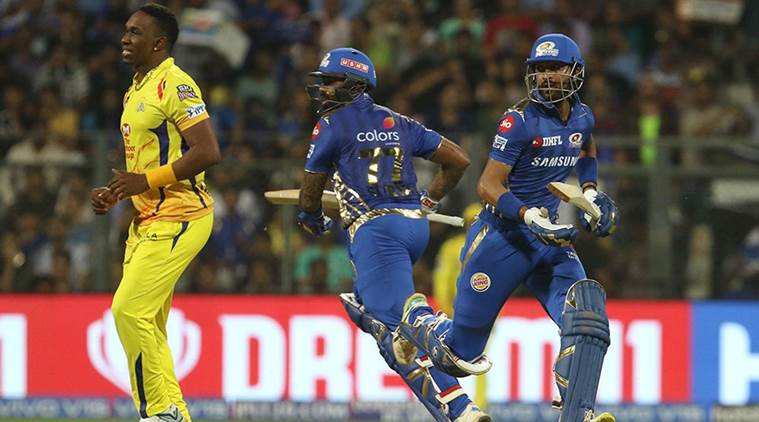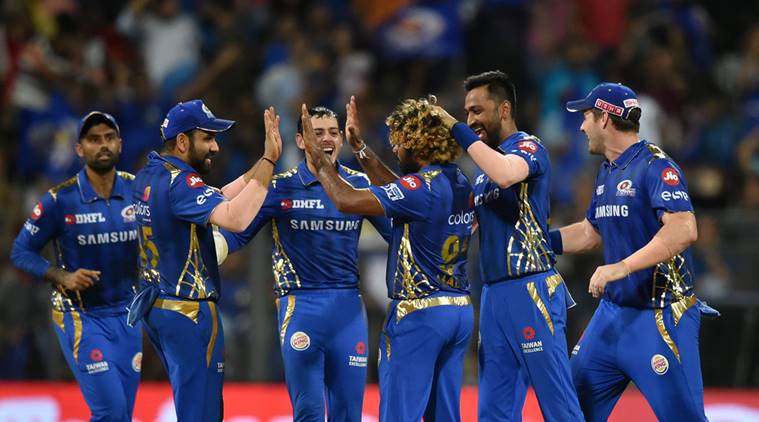
Qualifier 1
MI vs CSK
It could well have been the dress rehearsal for the final that will take place five days later. They are two IPL heavyweights, but T20 cricket keeps predictability at arm’s length.
In a format where three dot balls or three maximums can change the course of a game, it would be foolhardy to predict a Chennai versus Mumbai final, regardless of the fact that the losing team on Tuesday will get a second bite of the apple. Momentum is an important asset in the shortest format and both teams would be keen to take the shortest route to the title clash. It’s a contest between Mumbai’s firepower and Chennai’s cerebral cricket. Mumbai have match-winners aplenty, both in batting and bowling. Chennai have their spinners and MS Dhoni.
The sticky Chepauk surface will play to the hosts’ advantage. Then again, Mumbai are the only side in this IPL to conquer fortress Chennai. In fact, Mumbai won both their league matches against their arch rivals.
CSK spinners
Collectively, Imran Tahir, Harbhajan Singh and Ravindra Jadeja have accounted for 47 scalps so far in the tournament. Tahir is second in the list of top wicket-takers behind Kagiso Rabada. The spinners have papered over the Chennai batting cracks. No CSK batsman features in the top 15 run-getters. Spare a thought for medium pacer Deepak Chahar, who has been immense in the Powerplays.
There’s a pattern in the way the Chennai spinners operate. Harbhajan bowls inside the Powerplay and, more often than not, makes early inroads. Not many moons ago, the 38-year-old was working as a TV commentator. He came into this IPL with very little game time behind him. His return to form has somewhat defied science. But class is permanent.
Tahir is Chennai’s x-factor, bowling-wise. He keeps things simple, bowls to his fields and his strengths. The 40-year-old hardly experiments. He revels in out-thinking batsmen followed by a spectacular celebratory run and is a captain’s delight.

As for Jadeja, he is a different bowler when he plays under Dhoni’s leadership. The match against Delhi Capitals, where he took three wickets for nine runs, was a case in point. Dhoni used him as a stock bowler with a clear brief to keep one end tight after Tahir had removed Rishabh Pant.
On a helpful pitch, Jadeja just hit the right areas. Colin Ingram was done in by the fizz of an arm-ball.
In fact, a big percentage of his deliveries had been coming in with the arm. So when he made a couple of deliveries go the other way, Chris Morris and a well-set Shreyas Iyer were flummoxed. Dhoni’s electric hands behind the stumps did the rest.
Captain cool
Apart from a match-winning 96 off 53 balls against Sunrisers Hyderabad, Shane Watson has struggled to get going in this IPL. Most of the time, the Aussie has scored in single digits. Any other captain would have looked for a change up the order, but Dhoni sticks by his trusted lieutenants. Last year too, Watson had an average IPL until he blazed to an unbeaten 117 off 57 balls in the final. Creating the comfort zone for team mates is arguably the biggest plus point of Dhoni’s captaincy. His mates play for him.

As a batsman, the Chennai captain has regained his finishing mojo, which his slog-over strike rate – north of 150 – would attest. To an extent, his team is predictable and his approach a little old-school.
The batsmen don’t go berserk in the Powerplay. Dhoni comes at No. 4 or 5 and ups the ante – it would be interesting to see which bowler he or his team targets on Tuesday – in the slog overs. And then, the spin choke is initiated at Chepauk. The whole plan appears very simple. Then again, simplicity is genius. Chennai will miss Kedar Jadhav, who is ruled out of the remainder of the IPL after hurting his shoulder. Dhruv Shorey is likely to replace him.
MI’s gun player
After 14 matches, Hardik Pandya’s strike rate is 197.35. He also has 14 wickets to his credit. Hardik is arguably the most valuable player of this IPL, along with Kolkata Knight Riders’ Andre Russell. The West Indian played a lone ranger for Kolkata but Pandya has excellent support around him. His 34-ball 91 at Eden Gardens was arguably the most devastating piece of batting, albeit in a losing cause, by an Indian in limited-overs cricket of late.

Many a time he almost single-handedly turned the match on its head. Against the Capitals at Feroz Shah Kotla, Mumbai had laboured to 118/4 after 17 overs. The visitors finished at 168/5 after 20, thanks to Pandya’s 32 off 15 deliveries. On Sunday at Wankhede, Knight Riders had raced to 49 for no loss after six overs. Pandya came, removed Shubman Gill off his first ball followed by Chris Lynn’s wicket in his second over and sucked the life out of KKR’s batting. It’s any captain’s dream to have Jasprit Bumrah and Lasith Malinga as the team’s pace spearheads. The duo so far has 32 wickets between them. And when they don’t dismantle the opponents, the Pandya brothers – Hardik and Krunal – chip in.
The touch artist
Rohit Sharma wasn’t having a very good IPL by his standards. But his 55 not out against KKR on Sunday saw the return of the touch artist. KKR batsmen made the mistake of attempting big hits under pressure. The Mumbai skipper showed them how to place the ball and work the gaps. Of course, one has to have Rohit’s quality and range to do that. It’s unlikely that the Chepauk pitch would change its character overnight. In a battle of equals, Rohit’s class might prove to be the difference.